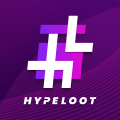Promosi
Publikasikan ICO
Koin
Calendar
Acara Crypto
Berita
DeFi
NFT
WEB3
Games
Tren
-
ID
English Русский Deutsch Español French Italian Portugues Indonesian Turkish Dutch العَرَبِيَّة বাংলা 中文(简体) 한국 हिन्दी 日本語
- Masuk

Moonsama is the multi-chain protocol enabling rapid building for NFT applications.Moonsama accelerates the go-to market of NFT-powered solutions by providing a layer of common, critical building blocks.
Non Fungible Tokens (NFTs) are digital assets that are becoming increasingly popular and are being used in a wide variety of ways. There are many potential use cases for NFTs, ranging from art and collectibles to gaming and virtual real estate. However, despite their potential, many NFT projects struggle to build and deliver on their roadmap due to challenges such as scalability and interoperability.
This is where Moonsama comes in. Moonsama provides infrastructure solutions and services that allow builders to leapfrog over some of the most critical building blocks and to focus on what makes their projects unique. By simplifying the process of building and deploying NFT projects, Moonsama is helping to drive innovation in the NFT space and empower creators to bring their visions to life.
Moonsama’s technology stack is designed to accelerate the arrival of NFT-powered solutions to the market. Builders can leverage Moonsama’s Utility layer to leapfrog over critical building blocks and focus on what makes their applications unique.
Moonsama network is a production parachain on Polkadot. That means we have the flexibility to implement token-based runtime logic and governance while having access to other networks (via XCM) and the shared security model of Polkadot.
Diverifikasi 0%
Perhatian. Ada risiko bahwa anggota yang tidak diverifikasi sebenarnya bukan anggota tim























Penawaran ini didasarkan pada informasi yang diberikan semata-mata oleh pemberi penawaran dan informasi lain yang tersedia untuk umum. Penjualan token atau acara pertukaran yang sama sekali tidak terkait dengan ICOholder dan ICOholder tidak memiliki keterlibatan di dalamnya (termasuk dukungan teknis atau promosi). Penjualan Token terdaftar dari orang-orang yang tidak memiliki hubungan dengan ICOholder yang hanya dapat membantu pelanggan melacak aktivitas yang terjadi di dalam keseluruhan token sector. Informasi ini tidak dimaksudkan untuk memberikan nasihat yang harus Anda andalkan. Anda harus mendapatkan saran profesional atau spesialis atau melakukan due diligence Anda sendiri sebelum mengambil, atau menahan diri, tindakan berdasarkan konten di situs kami. Syarat dan ketentuan apa pun yang dimasukkan oleh kontributor sehubungan dengan perolehan Token ada di antara mereka dan penerbit Token dan ICOholder bukanlah penjual Token tersebut. Pemegang ICO tidak memiliki tanggung jawab hukum atas setiap pernyataan yang dibuat oleh pihak ketiga sehubungan dengan penjualan Token dan setiap klaim atas pelanggaran kontrak juga harus dilakukan secara langsung terhadap entitas penerbit Token yang tercantum di sini.
Jika Anda memiliki masalah tentang sifat, kepatutan atau legalitas penjualan token ini atau orang-orang yang terlibat di dalamnya, hubungi info@icoholder.com dengan informasi rinci tentang masalah Anda.